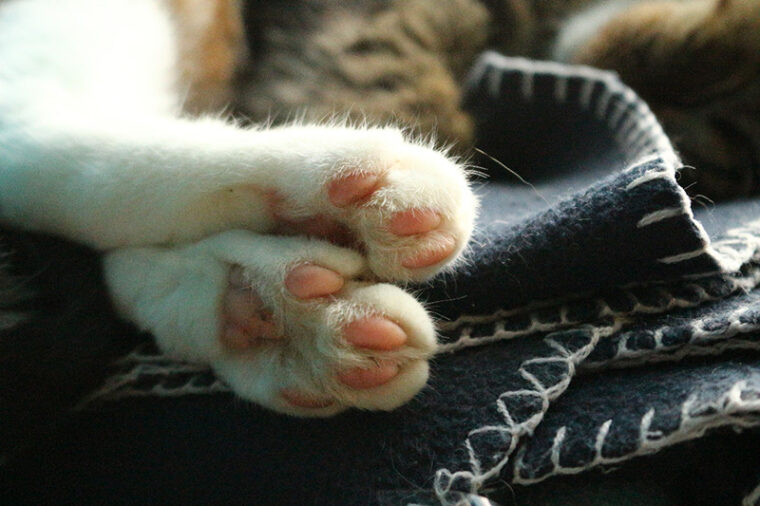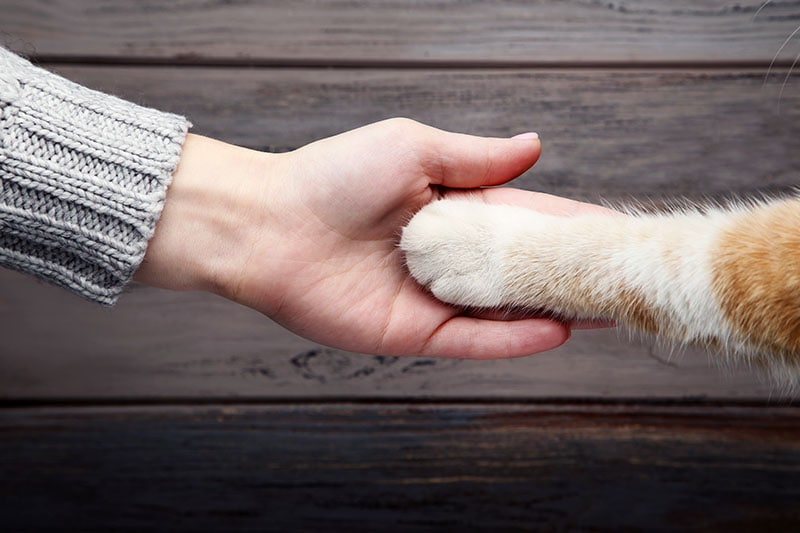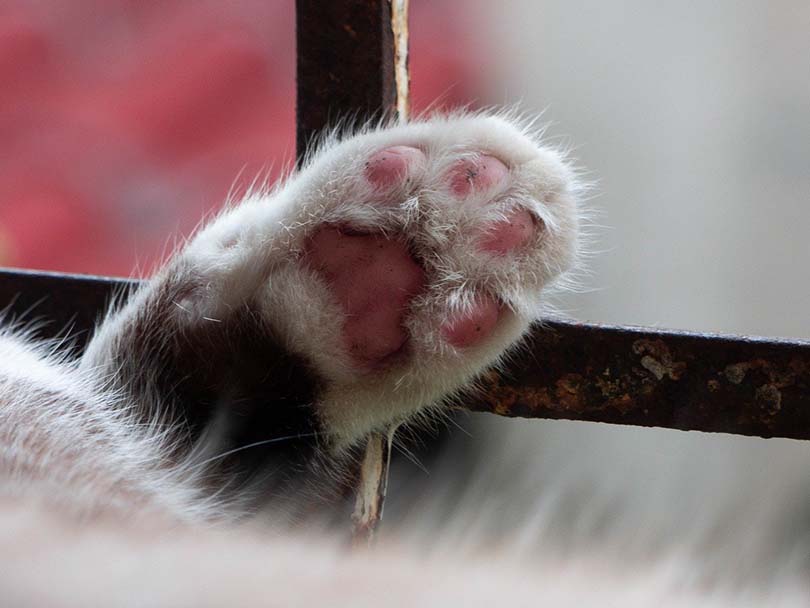
Cats’ paws are adorable, especially their toe beans (a.k.a. paw pads)! Beyond their cuteness, though, cats’ paws have various roles. They contain a large number of nerve receptors that help the cat feel texture, pressure, and vibrations around them. This is how cats can easily sense potential prey in the area.
Paw pads also help cats walk on their toes, making them silent predators. All that said, the soft cushions are not insulated in any way and can be seriously injured on hot or icy pavement or on rough surfaces, causing great pain. A cat’s paw pads are composed of connective and adipose tissue, blood vessels, and nerve endings and are covered by hairless skin.
Paw Pad Anatomy
Cats are digitigrade, which means they use only their phalanges as a point of support. Their limbs are composed of five toes in the front and four toes in the back. All toes are equipped with paw pads and protracted claws that enable the cat to climb. The fifth claw on each front paw is like a thumb and is called a dewclaw. It does not touch the ground, and its role is to help cats climb. Some cats have multiple toes on their front and/or back feet and are called polydactyls. Being polydactyly is a congenital, inherited malformation.
Cats also have metacarpal pads (front limbs) and metatarsal pads (back limbs) in the center of their paw. The central paw pads help support cats’ weight. The front limb has an extra pad in the lower portion, the carpal pad, which helps cats grip when they go down something steep or stop suddenly.
Cats’ paw pads are made up of connective and adipose tissue, blood vessels, nerve endings, scent glands, and sweat glands and are covered by thick, hairless skin. The pads help cats feel vibrations and gather information about their environment. It also helps them absorb shocks, making cats quite silent when they move and jump. The tissues from which they are formed function as primary shock absorbers.

 The 4 Facts About Cats’ Paws
The 4 Facts About Cats’ Paws
1. Cats Can Be Right-Pawed or Left-Pawed
A study performed in Ireland correlated cats’ sex with their dominant paw1. The data showed that male cats are left-pawed, and female cats are right-pawed. Although most studies offer different percentages for the number of right-pawed, left-pawed, or ambidextrous cats, they all claim that cats always have a preferred paw when faced with difficult situations, such as exiting a narrow space or hunting prey.

2. Cats Use Their Paws to Communicate
One of the reasons that cats scratch objects around them is to mark their territory. They secrete pheromones from scent glands located between their paw pads. In this way, they inform other cats that they have invaded their territory. For this reason, felines sometimes scrape with their paws after marking their territory with urine or spraying. In this way, they ensure that they send a clear message to their “enemies.”
Keeping your cat's nails trimmed can help you avoid many common paw problems. We like Hepper's Cat Nail Clipper Set because it has it all: two sizes of well-designed clippers, a nail file, and a handy carrying pouch. The clippers have built-in safety guards and locking switches, and the blades are made of sturdy, easy-to-clean stainless steel.
At Pet Keen, we've admired Hepper for many years, and decided to take a controlling ownership interest so that we could benefit from the outstanding designs of this cool cat company!
3. The Color of the Paw Pads Differs
The color of a cat’s paw pads differs depending on their fur color. For example, cats with gray or black fur have gray pads, orange or white cats have pink ones, and black-and-white cats often have pink pads with a black tip. These colors are influenced by the pigment (melanin) that also colors cats’ fur.

4. Cats’ Paws Are Incredibly Flexible
Cats’ paws can bend and turn, helping them with climbing and hunting. The front paws are designed to turn inward to grip branches better with their claws, which is why cats are so good at climbing trees.
That said, descending is usually done with difficulty. Cats have to go down backward because their claws are shaped like fish hooks. Also, the muscles of the back limbs and paws are stronger than the front ones. It’s for these reasons that cats often get stuck in trees.
Conclusion
Paw pads are made up of connective and fatty tissue, sweat glands, scent glands, nerve endings, and blood vessels. On the outside, they are covered by thick, hairless skin. Among their many functions, paw pads help cats be silent when hunting, mark their territory, regulate their body temperature, and feel the vibrations around them, helping them orient themselves. Cats also use their paws to clean and groom themselves.
See also:
- What Is a Digitigrade? Vet-Reviewed Science of How Pets Walk
- Do All Cats Have Thumbs? Feline Anatomy Explained
Featured Image Credit: Jumpstory



 The 4 Facts About Cats’ Paws
The 4 Facts About Cats’ Paws




